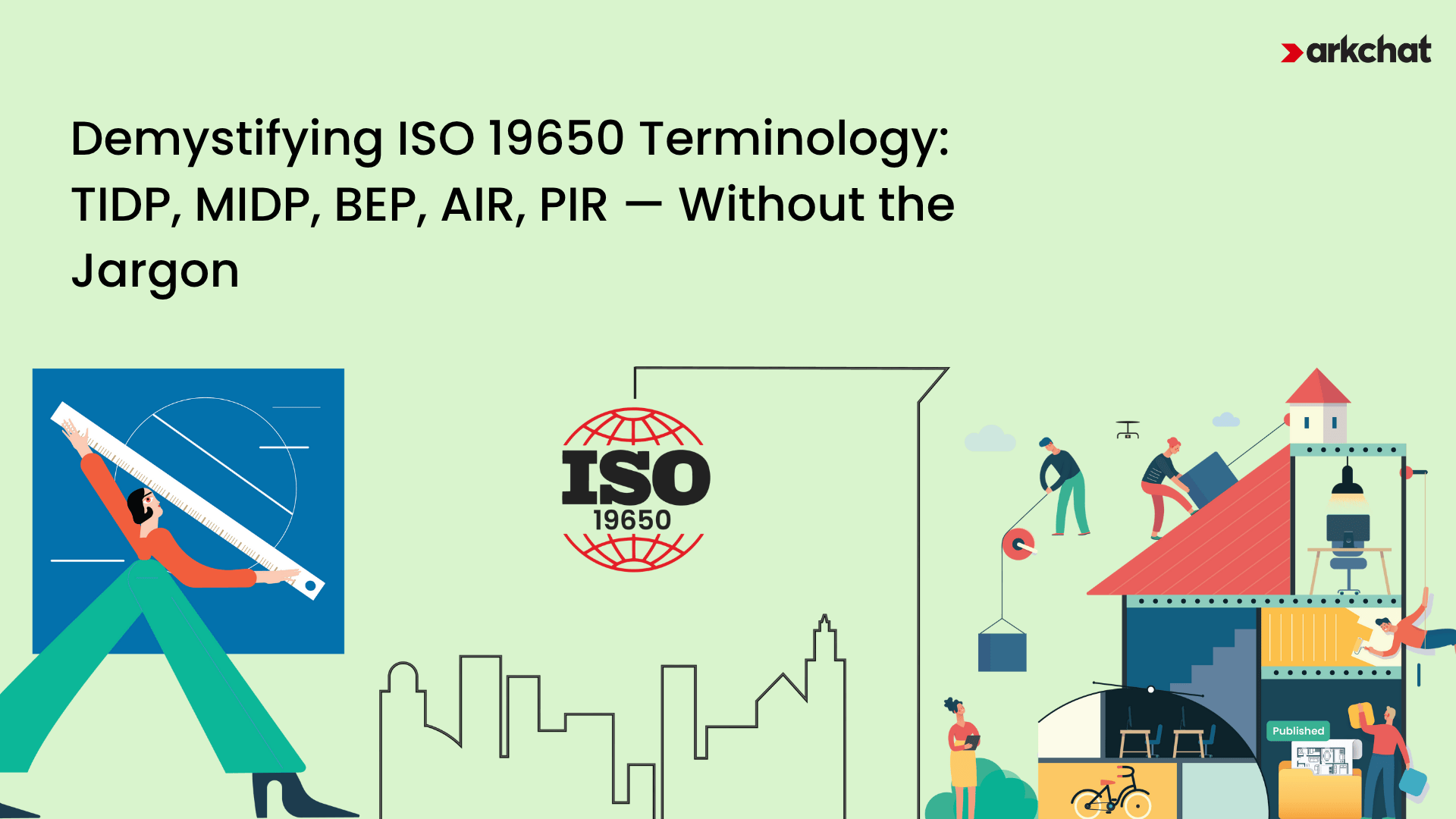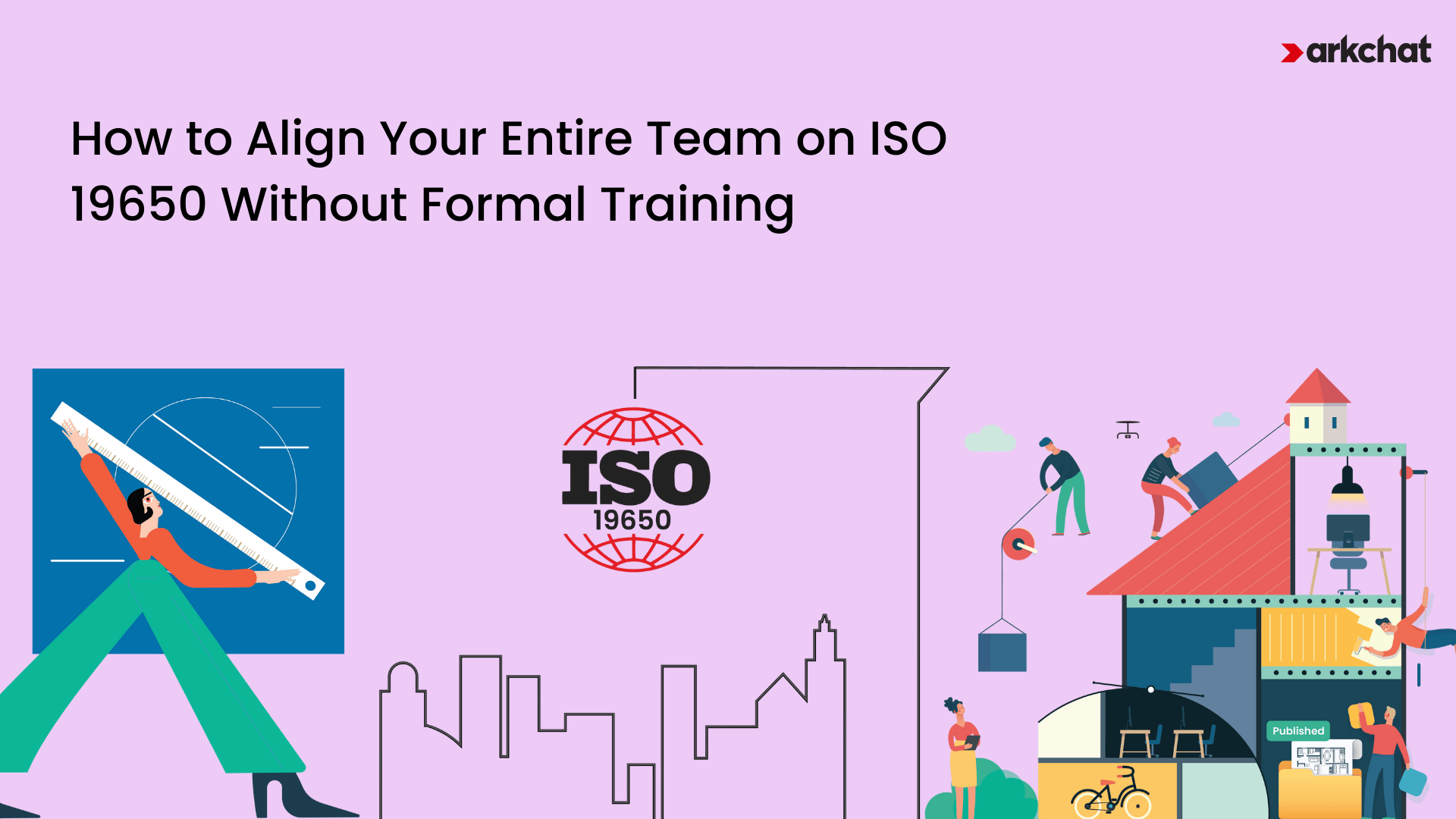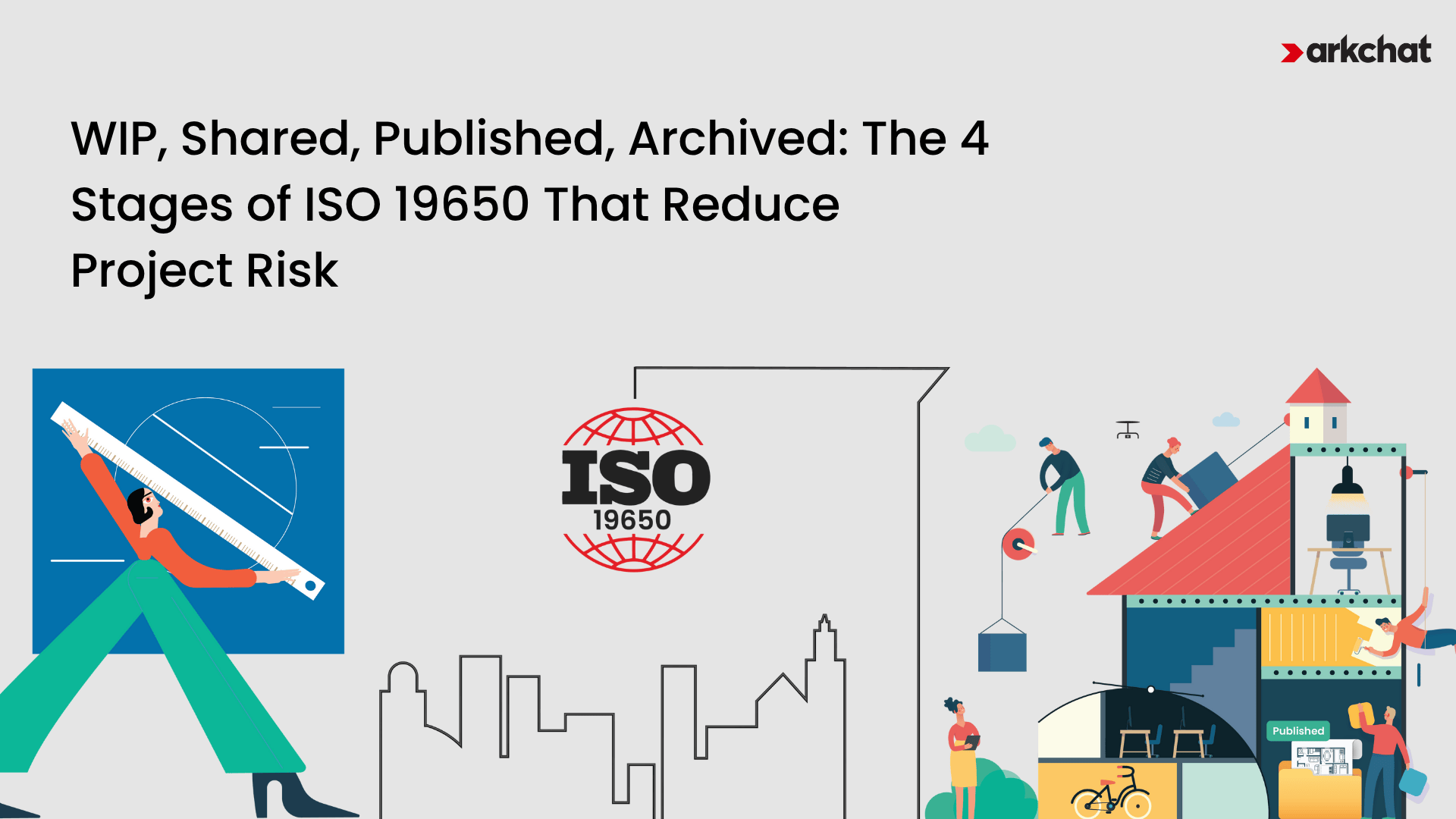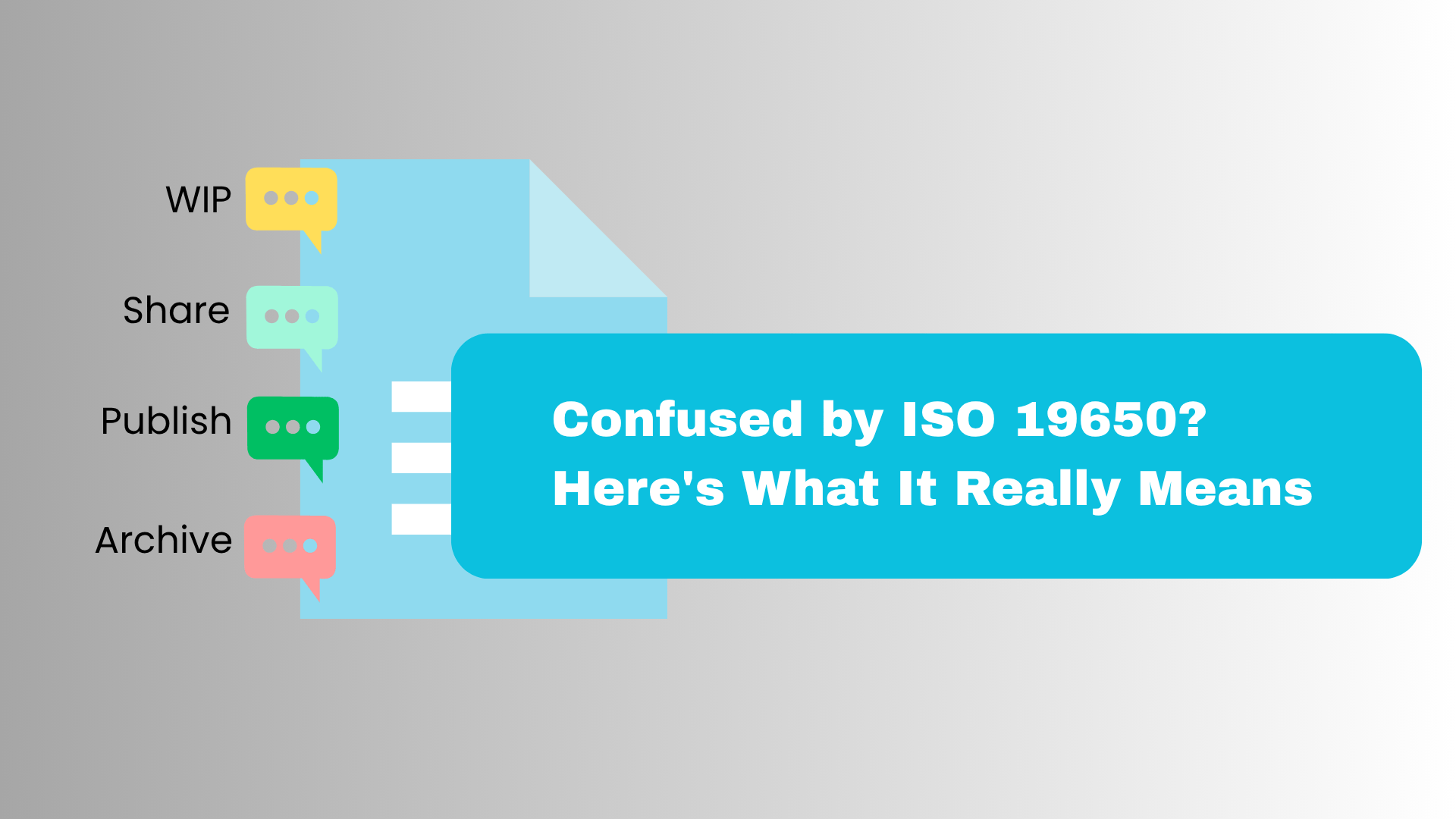Part 5 of the series: “Mastering Project Information Management — The ISO 19650 Way”
First, an apology for the delay in bringing you the next article in this series. Over the last few weeks, I’ve been busy conceiving what I believe will be the easiest Common Data Environment (CDE) in the industry, inside Arkchat. My goal is to ensure that AEC professionals can focus on projects, not software. Now that the foundation is taking shape, it’s time to continue our journey into ISO 19650 terminology—and make sense of it all without the jargon.
Why ISO 19650 Terminology Confuses So Many
If you’ve ever opened a BIM Execution Plan or read an ISO 19650 document, you’ve probably seen terms like TIDP, MIDP, BEP, AIR, and PIR thrown around casually. For many small and mid-sized AEC firms, these acronyms can feel like they belong to another world—one where large enterprises have dedicated project managers and compliance teams.
But here’s the good news: you don’t need to be intimidated. These terms have simple, practical meanings. Once you understand the basics of ISO 19650 terminology, you’ll see how it all fits together to make project information management easier, clearer, and more collaborative.
TIDP (Task Information Delivery Plan)
The first piece of ISO 19650 terminology you should know is TIDP.
Think of TIDP as a checklist. Each team—architects, engineers, contractors—creates its own plan showing what information it will deliver and when. It’s not about complex software; it’s about assigning responsibility. For example, the structural team might commit to uploading steel connection drawings by a certain date.
When every team has its own TIDP, the project runs like clockwork. No more wondering who is supposed to deliver what; it’s all mapped out.
MIDP (Master Information Delivery Plan)
If TIDP is a checklist for individual teams, MIDP is the master calendar for the entire project.
This part of ISO 19650 terminology brings all the TIDPs together into one coordinated view. It helps project leaders see the bigger picture: what’s due next week, which deliverables are slipping, and how all the pieces fit together.
In large firms, this is usually handled by BIM managers or project coordinators. But even if you’re running a small design studio, understanding MIDP will help you stay aligned with larger collaborators.
BEP (BIM Execution Plan)
The BEP is where the rules of the game are written down. This critical piece of ISO 19650 terminology defines how your team will create, share, review, and approve information.
While BEPs can get formal on mega-projects, at its heart it’s just a playbook. It says: “Here’s how we’ll name files, here’s where we’ll upload them, and here’s how approvals will work.” Without a BEP, every project member would invent their own system—and chaos would follow.
AIR (Asset Information Requirements)
Now we move from delivery plans to requirements. AIR is another key part of ISO 19650 terminology, and it comes from the client side.
Imagine a hospital project where the facilities team needs data about every HVAC unit—serial numbers, maintenance schedules, and so on. Those needs form the AIR. It’s like a shopping list for information that the client will need not just during construction, but for decades of building operation.
PIR (Project Information Requirements)
If AIR is about long-term asset management, PIR is about the here and now.
This part of ISO 19650 terminology covers what information is required during design and construction. For example, a project manager may specify that clash detection reports must be delivered every two weeks. PIR ensures that teams stay on track during the project phase, while AIR keeps an eye on the bigger operational picture.
Where Arkchat Fits In
Now, here’s something important: Arkchat is not trying to replicate or automate every part of ISO 19650 terminology. We’re not building templates for TIDP, MIDP, AIR, or PIR. Instead, our focus is on building the simplest CDE in the industry—one where files, tasks, and approvals live inside your everyday chat environment.
With Arkchat:
- Every file has version control and is clearly marked as WIP, Shared, or Published.
- Files can be pulled into any conversation thread, and tasks or approvals can be assigned instantly.
- Each file has its own dedicated message thread for context, feedback, and audit history.
You won’t need a dedicated project manager just to manage compliance. Instead, Arkchat keeps the benefits of ISO 19650 terminology within reach for small and mid-sized teams—without overwhelming them with complexity.
Why Understanding These Terms Matters
You may not be preparing a 200-page BIM Execution Plan, but here’s why you should care about ISO 19650 terminology:
- It creates a common language with larger firms, making collaboration smoother.
- It helps you avoid costly rework caused by unclear responsibilities.
- It ensures your team’s deliverables align with what clients actually need.
- It positions your firm as a professional, future-ready partner in the global AEC market.
Understanding these terms doesn’t mean you need to implement them in full—but it gives you the clarity to scale up when the opportunity comes.
Final Thoughts
In my view, the biggest barrier to adopting ISO 19650 terminology isn’t complexity—it’s perception. Once you strip away the jargon, these terms are simply good project management habits written down and agreed upon.
As Arkchat moves closer to launching its integrated CDE, my mission remains clear: to give AEC teams the simplest way to manage information, tasks, and approvals without extra software headaches. You’ll be able to stay aligned with ISO 19650 principles—without even realizing you’re doing it—just by sending everyday messages.
The next time someone mentions TIDP, MIDP, BEP, AIR, or PIR, you won’t need to panic. You’ll know exactly what they mean—and you’ll know how to keep your projects running smoothly.











